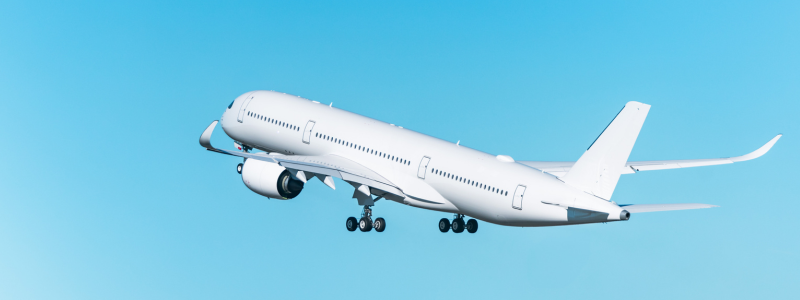Aviation is known for its precision, and precision in terminology is crucial, especially when it comes to safety. Two terms that often cause confusion are continuing and continued airworthiness.
At first glance, they seem almost interchangeable. However, in regulatory and operational contexts, the two terms refer to different and distinct processes for aviation.
Understanding the difference between them is essential for aircraft operators, maintenance organisations and manufacturers alike. One deals with day-to-day aircraft operations, while the other focuses on the entire operational life of an aircraft type.
In this article, we’ll clarify these concepts, explain their regulatory frameworks under the main airworthiness regulatory bodies; EASA (European Union Aviation Safety Agency), FAA (Federal Aviation Administration), and outline which concept (continued/continuing airworthiness) is responsible for what.
These Two Terms Get Confused, So What’s the Real Difference? Let’s Break It Down
Continuing Airworthiness:
Working in the aviation industry, you have probably heard the term continuing airworthiness a lot. But what does it actually mean? Simply put, it’s everything that needs to happen to keep an aircraft safe to fly, a.k.a. airworthy, during its operational life. It covers; maintenance, inspections, and regulatory requirements in order to comply with regulatory standards. If an aircraft is in operation, someone has to ensure it stays airworthy every single day.
From a regulatory standpoint, EASA, FAA and other national Civil Aviation Authorities provide structured frameworks for continuing airworthiness. In Europe, EASA governs continuing airworthiness through Part-M (Annex I to Regulation (EU) No 1321/2014), while in the United States, the FAA covers it under different parts of the 14 CFR, depending on the type of operation.
The responsibility for ensuring continuing airworthiness primarily falls on the aircraft operator. The operator, whether it’s an airline, a charter company or a private owner, must ensure that, at any given point, they are in compliance with all requirements regarding; scheduled maintenance, airworthiness directives (ADs), and manufacturer recommendations. Maintenance organisations and certified personnel play a crucial role in executing these tasks, ensuring compliance with the required standards. Indeed, the maintenance organisations and licensed engineers do the actual work, but the operator is the one to be held accountable.
Some key elements of continuing airworthiness include:
- Regular maintenance and checks (scheduled and unscheduled)
- Compliance with Airworthiness Directives (ADs) issued by the airworthiness authorities
- Applying manufacturer Service Bulletins (SBs) and modifications
- Component replacements and life-limited parts management
- Records-keeping and maintenance logs
In short, continuing airworthiness is an ongoing, continuous process and responsibility that ensures an aircraft remains safe, legal and ready to fly at all times.
We Understand Continuing Airworthiness—But What About Continued Airworthiness?
While continuing airworthiness is focused on an aircraft’s day-to-day airworthiness, continued airworthiness refers to the broader, long-term design integrity and safety of the aircraft type throughout its service life. This concept primarily falls under the responsibility of the aircraft manufacturer and aviation authorities.
Regulatory oversight ensures that the type design remains compliant with evolving safety standards. In the EASA framework, continued airworthiness is covered under the Part-21 (Regulation (EU) No 748/2012), which mandates that manufacturers monitor their aircraft models for potential safety concerns and address them through updates such as Airworthiness Directives (ADs), Service Bulletins (SBs), and design modifications. The FAA’s equivalent is 14 CFR Part 21, covering similar responsibilities.
Key aspects of continued airworthiness include:
- Monitoring of in-service aircraft performance, by collecting data from all type operators
- Airworthiness Directives (ADs) issued by authorities, supported by the TCH to correct safety deficiencies
- Design modifications and Service Bulletins (SBs)
- Accident and incident analysis to define aircraft safety measures
- Ensuring compliance with evolving regulatory standards
The manufacturer and the regulatory authorities play a proactive role in addressing design-related safety concerns to assure fleet-wide safety and compliance with all regulatory and certification specifications requirements. Unlike continuing airworthiness, which is an ongoing process managed by operators and concerns each aircraft in particular, continued airworthiness focuses on design-level over time for the entire aircraft type.
The Product Safety Enhancement derives from the main airworthiness field and Airbus Protect has a vast experience in enabling safer and more sustainable industries and transportation systems.
Conclusion: The Key Differences at a Glance
While the terms continuing airworthiness and continued airworthiness sound similar, their scope and responsibilities differ significantly:
- Continuing airworthiness refers to the maintenance and airworthiness of individual aircraft, ensuring they remain safe for flight. This is the responsibility of the aircraft operator.
- Continued airworthiness focuses on the long-term safety and compliance of an aircraft type, requiring oversight by the manufacturer and regulatory authorities.
Both aspects are crucial for aviation safety, working together to maintain aircraft reliability and regulatory compliance. Understanding this distinction ensures that aviation professionals can properly interpret maintenance and safety obligations within the industry.
At Airbus Protect, our experience shows that continued airworthiness can be much trickier, as it is a broader topic, which requires tracking a lot of elements over a long period of time, thinking beyond compliance to ensure fleet-wide airworthiness.
By recognising the differences between continuing and continued airworthiness, operators, maintenance organisations, and regulatory bodies can work in harmony to uphold the highest safety standards in aviation.
So next time you hear someone mix these terms up, you’ll know exactly the meaning of both and why they are essential to keeping the sky safe!


